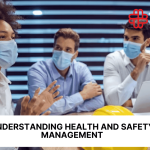Health and safety within your organisation aren’t just requirements; they provide beneficial training, processes, and procedures to help your business progress. They also help you remain within legislative guidelines to manage risks and profile disasters, guaranteeing the continuation of your business.
Creating effective health and safety procedures and developing employees to use and enforce them will assist you in staff retention and asset protection, and increase company morale.
Your employees are your responsibility in the working environment; ensuring they are healthy and safe at work is essential. Not only will you avoid potential risks, but your employees will also feel more valued and become more productive.
Upon completion of this course, participants will be able to:
- Create effective training and development strategies in health and safety.
- Understand your legal responsibility towards health and safety requirements.
- Monitor the success of your health and safety procedures.
- Create a health and safety culture within the workplace.
- Evaluate risks and hazards and learn to mitigate them.
This training suits anyone responsible for health and safety or line management within an organisation. It will be most beneficial for:
- Health and Safety Managers
- Risk Assessors.
- Fire Marshalls.
- Maintenance Workers.
- Engineers.
- Managers.
- Directors.
- Team Leaders.
- Supervisors.
- Process and Change Managers .
This course covers trainer-led health and safety presentations interspersed with various adult learning techniques, case studies, and practical sessions.
You’ll review video content, assess case studies of real-life events, and develop group action plans based on scenario-driven role-play.
Day 5 of each course is reserved for a Q&A session, which may occur off-site. For 10-day courses, this also applies to day 10
Section 1: Legislation & Guidelines
- Your responsibility as an employer.
- PDCA (Plan, Do, Check, Act).
- OHSAS 18001 guidelines.
- ISO 45001 legislation.
- Your Policies.
Section 2: Risk Assessments & Reviews
- Setting guidelines for a weekly assessment.
- Control principles.
- Reviewing changes.
- Inspections and what is required.
- Allowing for human error.
Section 3: Identifying & Controlling Hazards
- Manual handling techniques.
- First aid kit control and replenishment.
- Electricity hazards.
- Fire alarm testing.
- Chemical hazards.
- Transport hazards.
Section 4: Post Incident Investigation
- Workplace hazards and how to resolve them.
- When to investigate an incident.
- Managing poor responses and moving forward.
- Communication and feedback.
- Understanding inputs and outputs.
Section 5: Risk Management
- The Swiss Cheese Model.
- HAZOP case studies.
- Cleaning products and materials and their storage.
- COSHH assessment.
- Proactive vs. reactive monitoring.
Section 6: Fire Safety
- Identify your biggest risk areas.
- Passive fire protection.
- Active fire spread prevention.
- Types of fire (VCE, UVCE, BLEVE, Boil Over).
- Fire extinguishers and their importance.
- Fire doors and their locations.
Section 7: Evacuation Procedure
- When to test your evacuation procedure.
- Appointing fire zones.
- Upskilling fire marshalls.
- Determine how long an evacuation should take.
- Consider performance and feedback.
Section 8: Emergency Response Review
- Employee training and sign-off.
- Understanding the consequences.
- Creating a safety-first culture.
- Employee behavioural models (Taylor, Herzberg & Geller).
- Penalties for poor management and behaviour.
Upon successful completion of this training course, delegates will be awarded a Holistique Training Certificate of Completion. For those who attend and complete the online training course, a Holistique Training e-Certificate will be provided.
Holistique Training Certificates are accredited by the British Assessment Council (BAC) and The CPD Certification Service (CPD), and are certified under ISO 9001, ISO 21001, and ISO 29993 standards.
CPD credits for this course are granted by our Certificates and will be reflected on the Holistique Training Certificate of Completion. In accordance with the standards of The CPD Certification Service, one CPD credit is awarded per hour of course attendance. A maximum of 50 CPD credits can be claimed for any single course we currently offer.
- Course Code PO2-101
- Course Format Classroom, Online,
- Duration 5 days














